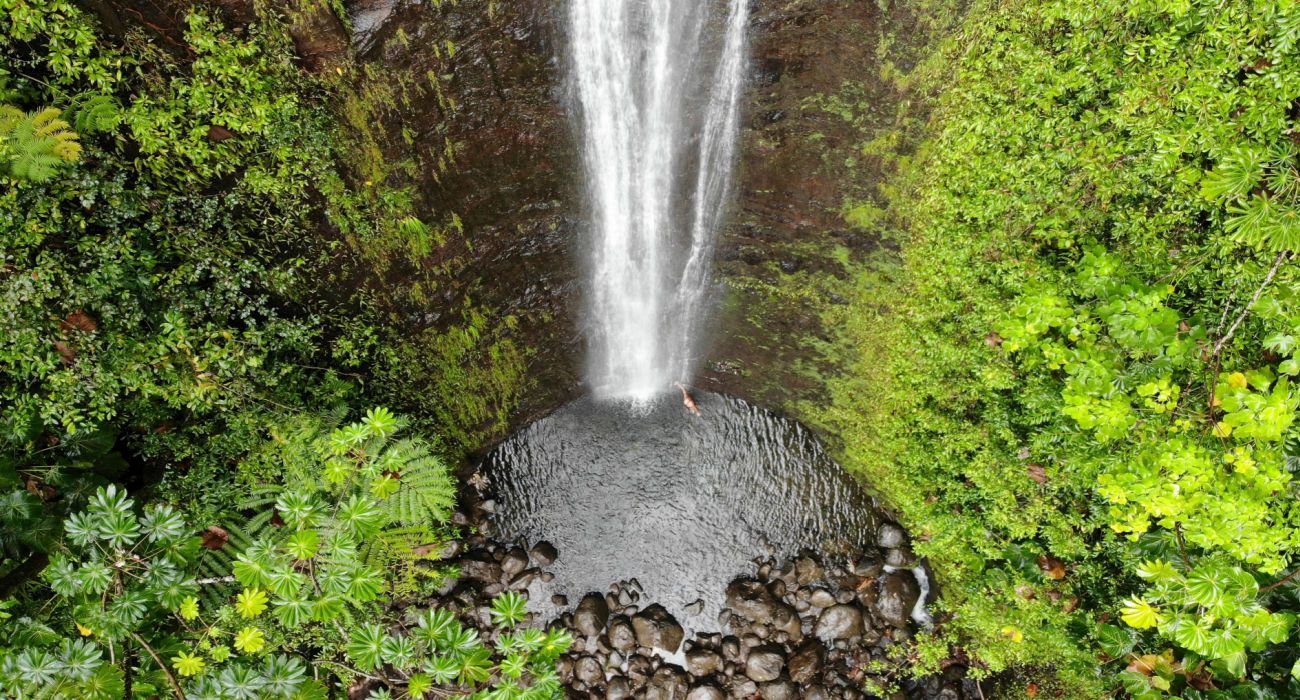Quick Links
Hawaii is a volcanic landscape that has been borne over millions of years of eruptions and volcanic activity. Today its landscapes are dramatic (it was the filming location for Jurassic Park, after all), and the islands have scores of dramatic waterfalls gushing over the lush landscapes. On the Hawaiian Island of Kauai, one can even take a helicopter tour and land at the iconic waterfall that starred in the movie Jurassic Park.
Many of the stunning waterfalls of Hawaii are on some other islands away from Oahu. One of the more dramatic waterfalls accessible from the main city of Honolulu is Manoa Falls. Visiting Manoa Falls is arguably one of the top things to see and do while on Oahu. The Manoa Falls are only a short drive from Honolulu and offer a pristine break from the concrete jungle of Hawaii's largest city.
Manoa Falls - The Tropical Falls In Honolulu
Manoa Falls plummets some 150 feet and is ideal for taking Instagram pictures. Some of the scenes for the TV show Lost and the movie Jurassic Park were shot right here. The waterfall is tucked away in a stunning tropical rainforest. The intense rains and warm water results in a large amount of plant life around the falls.
In fact, the trailhead is located only around a 15-minute hike from the bustling city of Honolulu and is a contrast to be sure.
- Location: Honolulu, Manoa Valley, Oahu
- Height: 150 Feet
While there is a stunning pool at the bottom that looks great for swimming, people are discouraged from swimming as there is a risk of getting infected with Leptospirosis. It is a disease that leads to mild to moderate flu-like symptoms for a week or two.
The Manoa Falls Trail
The hike to and from Manoa Falls takes around an hour (depending on how much mud there is and how quick the hikers are). This part of the island is very wet and has some rainfall most days (so be prepared for rain). The elevation of the trail is around 600 feet over a gradual climb and sometimes rocky and muddy terrain. Still, many would consider this trail to be more of a "walking trail" than a "hiking trailing."
- Length: 1.7 Miles (2.7 Kilometers) Round Trip
- Duration: 60-90 Minutes
- Difficulty: Easy to Medium
- Open: Year-Round
- Best Time: June to November
Note that this trail is quite popular, and one can expect to see plenty of other people on the trail. The trail is open all through the year and is great at any time. That being said, the better time to visit is from June to November - outside the rainy season. During this time, there is less rain and fewer risks of landslides.
The Manoa Falls Trail had been closed for almost two years, from 2019 to 2021, for safety improvements. Fortunately, the trail is now open to the public once again.
The vegetation varies from the eucalyptus trees of Australia to the old-growth banyan trees to a bamboo grove.
There is paid parking at the Paradise Park parking lot at the trailhead - or one can park for free in the residential neighborhood and walk the distance to the trailhead.
What To Expect Along The Manoa Falls Trail
Hawaii is known for its microclimates, and the Manoa Valley is an example of a microclimate. Even if Waikiki (just a few miles away) is dry and sunny, it can be drizzly or even rainy in the valley. The upshot is that the waterfall doesn't get the chance to run dry, and there are often one or two rainbows to be seen while there.
People should go in enclosed shoes with tread as the unpaved trail is normally damp and muddy. Be prepared to have muddy shoes and perhaps muddy legs at the end of the hike.
The ease of hiking the Manoa Falls Trail and the relatively short distance make it a trail many families can do with their kids (the mud and rain notwithstanding). Hikers are sheltered by the trees for almost the entire journey.
Around halfway up the trail is a detour that goes through a bamboo grove - don't miss it! Another attraction along the way is the Lyon Arboretum. Here one can see many of the endangered native Hawaiian plant species.

